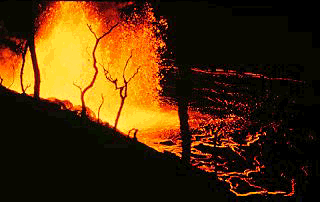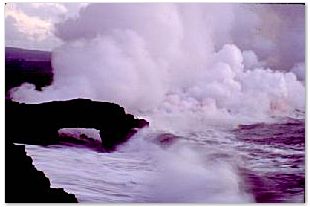Evidence of our Pre-historic Atmosphere, Part Deux
By studying the ratio of different isotopes, geologists have uncovered evidence of
an early atmosphere on Earth, 4 b.y.a.

Argon-40
The most abundant, stable form of argon is Ar-36. Ar-40
ONLY comes from the decay of K-40, residing in the
rocks. If the rock had been sitting a long time before releasing its gas, more
K-40 would have turned into Ar-40, and released large amounts of
Ar-40 into the atmosphere. We do NOT see very much Ar-40. Out-gassing
from the rocks happened early, before much Ar-40
was created in the rocks.
 Xenon
Xenon
Light elements achieve escape velocity at typical terrestrial
temperatures. Hydrogen escaped from the Earth atmosphere almost immediately
after being released from molten rock/volcanos. In early times, this
exodus of H gas would have been great enough that it would carry away
(by friction) atoms not normally light enough to escape, such as light
isotopes of Xe. The lack of light Xe now means it already existed
in the very early Earth atmosphere, because it was there to be carried away
during the great H exodus.
SO: Earth had a gaseous atmosphere, perhaps even rather thick, (heavy, and thus with an increased pressure at the surface). However, NO OXYGEN!!
Early Oceans
Very early oceans are also suggested based on the discovery of 3.8-4.0 b.y.o.
metamorphic rock, which came from earlier sedimentary rock, which could
only have formed at the bottom of an ocean. Carbonates, starting as
atmospheric CO2, dissolving into the ocean, then precipitating out,
are found to be 3.8 b.y.o.